C2SM Newsletter vol. 38
Topics in this Newsletter – February 2024
- Modelling Activities and Services
- C2SM Technical Trainings
- News from EXCLAIM
- News from the C2SM Community
- Upcoming Events
- PhD Defenses
- Selected Press Articles
Highlighted papers in the C2SM Community
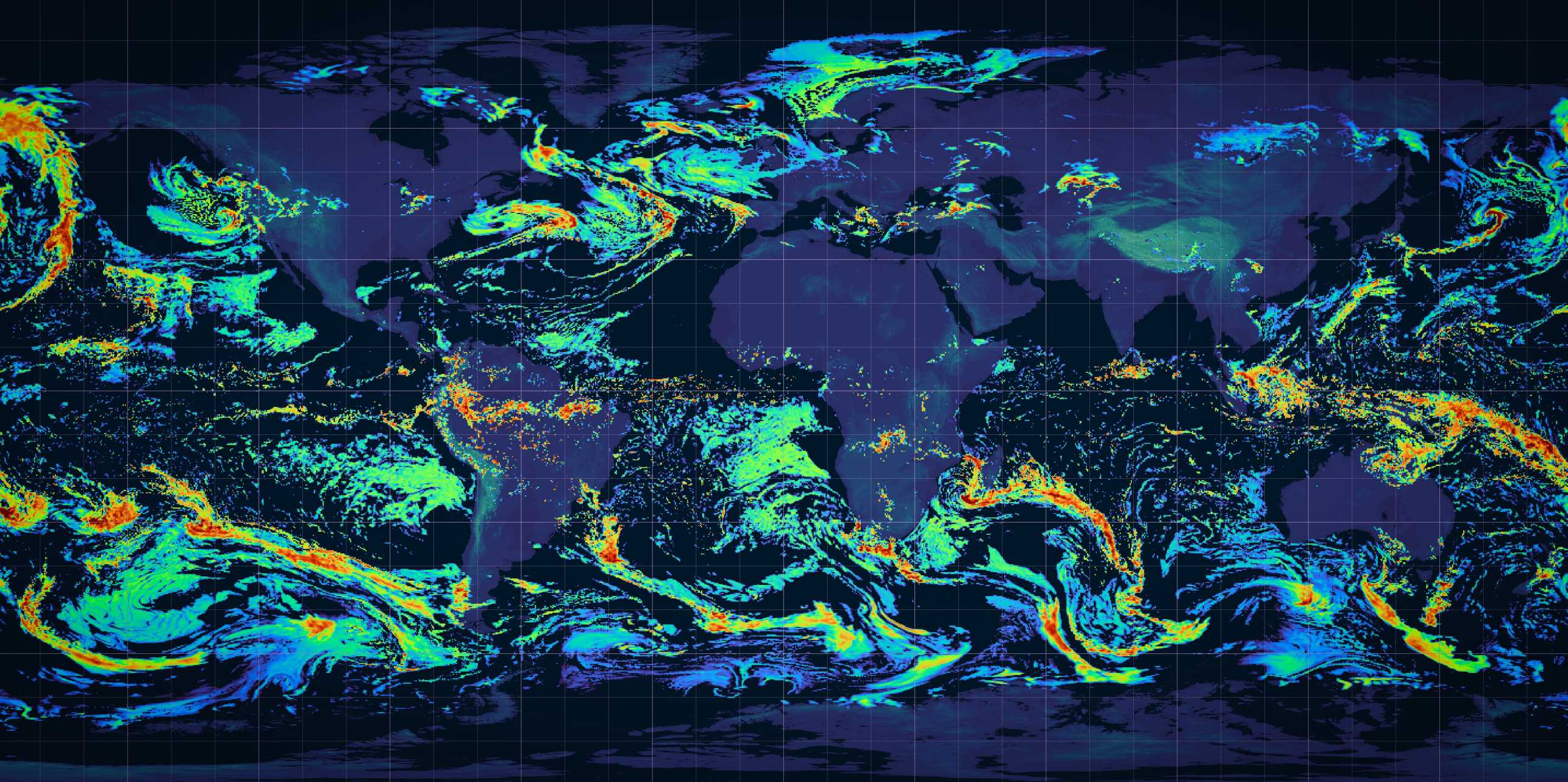
Modelling Activities and Services Working Group 1 (WG 1): High Performance Computing
Speed up of two-moment microphysics scheme in ICON
The C2SM core team has successfully adapted the two-moment cloud microphysics scheme from Seifert & Beheng (2006) for graphics processing units (GPUs), significantly reducing computation times. This scheme, offering a more accurate representation of microphysical processes than the widely used one-moment scheme, was previously too computationally expensive for most applications.
The scheme is available in an implicit and an explicit mode, where the explicit scheme is computationally more efficient and the implicit scheme is potentially more accurate. After an unsuccessful GPU port of the implicit scheme in terms of speedup, the port of the explicit scheme resulted to be 20 times faster than the GPU version of the implicit scheme. Importantly, the overall GPU runtime is only 16% slower than the one-moment scheme.
The implicit scheme has also been improved, allowing the microphysics calculations to run almost 10 times faster on the GPU than the previous version. However, the accelerated version is available for testing only, as considerable effort is still required to integrate it into the official version of the ICON (ICOsahedral Nonhydrostatic) weather and climate model. Users are encouraged to evaluate the feasibility of the explicit scheme for their research.
Advancing ICON model accuracy: Successful completion of Probtest consolidation for GPU transition
The C2SM core team successfully completed the task to consolidate the Probtest testing infrastructure, ensuring the accuracy of ICON during its transition to GPU computing.
Originally designed for CPUs, the ICON model is being adapted for GPU runs. The Probtest infrastructure validates the consistency between CPU and GPU runs considering them equivalent within an acceptable range around reference CPU runs. This range is determined through multiple CPU runs (ensembles) with perturbed input data.
Extensions have been introduced to address potential false failures in Probtest. For example, users can now adjust the ensemble size to prevent failures due to insufficient statistics rather than GPU port issues.
These improvements enhance Probtest reliability, automating ICON validation, especially in comparing CPU and GPU runs. This marks a significant advancement in the ongoing development of the ICON weather and climate model.
Working Group 2 (WG 2): Development of Weather and Climate Models
Updating and consolidating Processing Chain for ICON-ART
Processing Chain is a collection of Python scripts to prepare the input data, submit the compute jobs to the high performance computing system at the Swiss National Supercomputing Centre CSCS, and to apply post-processing steps for COSMO and ICON simulations. Processing Chain was first enabled to handle global simulations with the external pageICON-ARTcall_made (Aerosols and Reactive Trace Gases) model. Now the code structure has been revised (refactored) to improve comprehensibility. This restructuring facilitates the onboarding of new users and simplifies the integration of new options and configurations.All of the above-mentioned code changes went into the recently released external pageversion 3.0 of Processing Chaincall_made, which is publicly available.
Workflow Tool
The latest version of Processing Chain offers a user-friendly interface, making it easier for newcomers to access and more easily create new simulation scenarios and configurations. It holds potential as a workflow tool for climate simulations and applications within the openETH project EXCLAIM, among others. Rigorous testing on CSCS machines is conducted to ensure the stability of Processing Chain.Presently, C2SM core team is actively engaged in enhancing its efficiency. Currently, jobs are executed sequentially resulting in unnecessary waiting periods. Therefore, asynchronous job submissions are currently being implemented to optimise the overall runtime of the simulation chain. The overall goal is to enable parallel execution of tasks by defining dependencies between the different jobs, and thus improving overall performance.Simultaneously, efforts are underway to revise the documentation for the tool. This revision aims to both streamline the process for new users and ensure a smooth transition for existing users to the updated version.
Working Group 3 (WG 3): Climate Scenarios
ICON-CLM in CORDEX setup
One of the use cases of the EXCLAIM project focuses on conducting regional climate simulations over Europe, employing the GPU version of external pageICON-CLMcall_made, where CLM stands for Climate Limited-area Modeling. These simulations play a crucial role in contributing to the Klima CH2025 project. Following a successful 10-year test simulation, driven by ERA5 data, which demonstrated that the GPU version of ICON can generate reasonable climatology statistics, two essential steps are required before a full evaluation and historical run can take place.Firstly, there is a need to define a model setup that accommodates the use of transient aerosol datasets, specifically the MACv2-SP dataset, within the ICON framework. This data is now available at CSCS. In addition, a new configuration to incorporate dynamic aerosol information has been set up.Secondly, certain components of the ICON code had to undergo GPU porting. This includes the reading-in of time-varying sea-surface temperature and sea-ice, adapting the upper boundary nudging mechanism and implementing the reading-in process for the transient aerosol data to be compatible with GPU architecture. The latter is still being worked on, while the first two ports have already been completed.
Klima CH2025
On the science side, the way forward to deal with the underestimation of recent temperature trends by climate model scenario simulations has been discussed and worked upon (see external pageKlima CH2025 updatecall_made).In addition, C2SM work for Klima CH2025 involves work around data infrastructure (Working Group 4, lead Felix Maurer MCH and Ruth Lorenz C2SM). For better reproducability and traceability, Working Group 4 worked on recommended code management practices for Klima CH2025. These guidelines were presented and discussed in a workshop with all people involved in the CH2025 dataflow in January. In addition, code used in CH2018 is currently consolidated and archived. Following the developed guideliness, git is now used for code versioning and all code of CH2025 has to be uploaded to the MeteoSwiss gitlab server.
Working Group 4 (WG 4): Climate Impacts
Downloading and processing COPERNICUS data, coupling with CLIMADA
Together with the Weather and Climate Risk Group (Dr. D. Araya) C2SM worked on downloading seasonal forecast data provided by Deutscher Wetterdienst (DWD) from the Copernicus Climate Data Store (external pageCDScall_made) to couple them with the natural hazard model CLIMADA. CLIMADA assesses the impact of natural hazards such as heat waves. Two heat indices were calculated, i.e., daily mean temperature as used by MeteoSwiss for their heat warnings and a “heat index adjusted” that is adjusted between different thresholds to be more accurate in the tropics. To calculate these indices, 2 metre temperature and 2 metre dewpoint temperature were downloaded from the DWD seasonal forecast system as grib files. In addition, anomalies had to be computed as the seasonal forecast data is not bias-corrected. For this purpose, data were downloaded for four months into the seasonal forecasts for the full hindcast period (1993-2016) for starting months January to September. To feed the data into CLIMADA, hazard intensity and frequency then needed to be calculated based on these indices. Despite challenges with unforeseen technical mishaps on the CDS side, the work was concluded successfully resulting in a wealth of new knowledge around seasonal forecast data and their integration into CLIMADA.
Downloading and processing ERA5 data
ERA5, the fifth generation ECMWF reanalysis for the global climate and weather, data can only be downloaded from CDS as 1-hourly values for most variables. For impacts research daily values are needed most often which need to be calculated after the download. WSL provided a list with variables they need from ERA5 (surface variables, as well as some 3D variables on pressure levels) and some additional variables which need to be calculated from other variables because they are not available from ERA5 directly. This list of variables can be found on polybox, note that other groups can make use of this data as well. In addition to the calculation of daily and monthly values, the data were standardized in a way to be consistent with CMIP (variable names and units). Initially, the aim was to use existing data already available at ETH from the atmospheric dynamics group (Prof. H. Wernli), but unfortunately the spatial grid of this data is coarser then what WSL needs. C2SM core staff is currently downloading and processing this data to ETH and it will also be available on Euler. Speed up of two-moment microphysics scheme in ICON

Upcoming C2SM Courses
1. Git for Beginners 2024 | March 2024
This exercise consists of short descriptions of specific Git commands, followed by a hands-on part where you will be able to execute the corresponding Git commands. 11th March 2024
2. Introduction to Python 2024 | March 2024
This course introduces fundamental concepts of the Python programming language including a basic introduction into scientific data analysis with Python
- 13 March, 3 PM to 5 PM: Zoom meeting (2h) with introduction and first experiences with Python.
- Following meetings (with Zoom, always from 3 PM to 5 PM): 18 March, 21. March, 25 March, 28 March
3. Scientific Visualisation using Python 2024 |April 2024
The workshop will consist of alternating short presentations and subsequent hands-on exercises.
- 25 & 26 April 2024, from 9 AM to 5 PM
More information and online application
Past C2SM Courses
Technical course «Git for Advanced» successfully carried out
In September 2023, C2SM core team organised the "Git for Advanced" workshop at ETH, a follow-up to the "Git for Beginners" session held in April. The workshop, attended by 24 participants from various member groups (IAC, MeteoSwiss, EMPA, IBP, D-BAUG, VAW), featured slides and hands-on Git exercises.
Great news for participants - all course materials are external pageavailable onlinecall_made for review and practice. Participants praised the workshop for being informative, practical and well-organised, and for providing valuable insights into efficient software development.
«Climate Model and Climate Data Workshop» successfully carried out for the first time
On December 6th 2023, around 30 C2SM members from the impacts community met at Eawag in Dübendorf for the first „Climate Model and Climate Data Workshop“. Michael Jähn and Ruth Lorenz, with support from Annika Lauber and Fabian Schöni, from the C2SM core team gave an introduction to the concept and functionality of climate models. After an introductory overview of what a climate model is and how it works, various technical aspects were explored including input parameters, the types of output generated, and other important considerations such as uncertainties, biases, and model independence. Additionally, various observational and reanalysis products were discussed. Furthermore, the process of accessing climate model and observational data at C2SM and other sources was explained, such as the external pageCopernicus climate data storecall_made and external pageEarth System Grid Federation (ESGF)call_made.
The workshop also included a brief hands-on session on how to use climate data. The most common data format NetCDF was explained, as well as how to read this into Python and R. Finally, examples for simple calculations using the Climate Data Operators (CDO) were given.
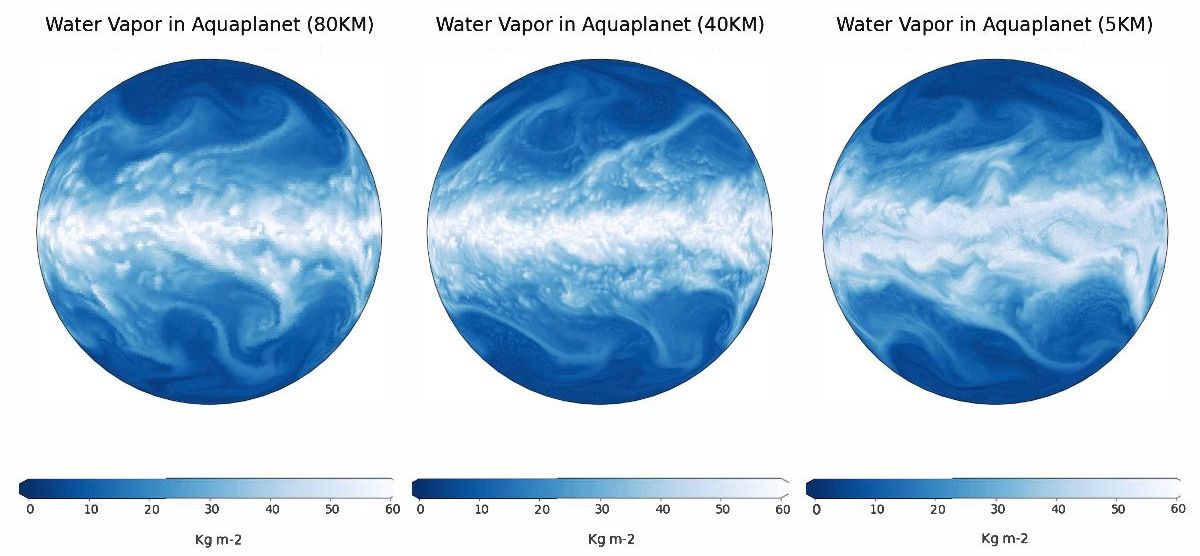
The EXCLAIM project (Extreme scale computing and data platform for cloud-resolving weather and climate modeling) aims to develop an ICON-model based infrastructure that is capable of running kilometre-scale climate simulations at both regional and global scales.
In 2023, in its second year, EXCLAIM has completed the first cloud-resolving simulations of the global aquaplanet using the refactored Python-based dynamical core on 1000 Piz Daint nodes. This is the first step towards the proposed exascale computing platform. The next step is to push the grid resolution to 1 km on the upcoming new CSCS supercomputer to demonstrate the added value of such a high resolution for the representation of extreme jets.
The latest EXCLAIM publications can be found on the project’s website.

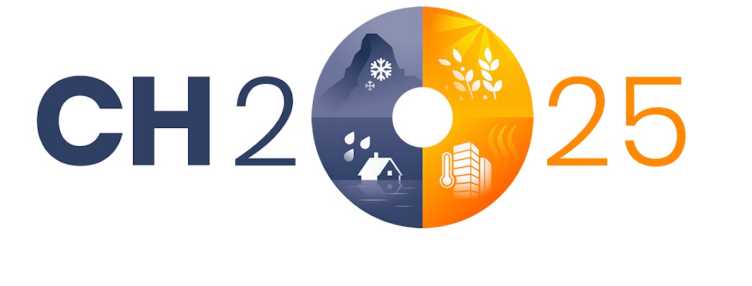
Update: Klima CH2025
The external pageKlima CH2025 projectcall_made, tasked with updating the Swiss Climate Scenarios, recently held their second Steering Group meeting end of January 2024. The underestimation of recent temperature trends by EURO-CORDEX climate model scenario simulations is addressed. Multiple methods were tested and discussed and the Steering Group reached decisions how to move forward. A „pattern scaling“ based approach for global warming levels is prioritised and the production chain will be adapted accordingly. The quantile mapping for regional climate models (bias correction and downscaling) will be calibrated to the new reference period 1991-2020 and applied to an updated selection of EURO-CORDEX models. An initial model selection has been made, and evaluation will be performed on both scales (European scale and Swiss specific in the bias-corrected 2-km dataset). These decisions set out next steps for the Spring 2024 work plan and will be reported on at the June Steering Group meeting.
The Project Advisory Group will meet in mid March, to be updated on Project progress a year on from the Kick Off meeting in March 2023, also to gather feedback. Coordinators and Working Group leads will soon establish a Core Group to enable rapid decision-making across project teams. Finally work on developing Products and understanding User needs is ongoing in parallel to the scientific input.

NCCS-Impacts programme: all consortia completed and stakeholder involvement started
For the NCCS programme "Decision Support for Dealing with Climate Change in Switzerland: a cross-sectoral approach" (NCCS-Impacts), all of the project consortia that are coordinated by the NCCS office, are now complete: the additional project partners Infras, Prognos and Zoï Environment Network were mandated to work with WSL in the project "Socioeconomic Scenarios".
Four project consortia were already formed in spring 2023. They analyse the impacts of climate change in Switzerland on supply chains, health, ecosystems as well as the costs of climate change and elaborate actionable climate services for the environment, economy and society. In October and November, project-specific stakeholder workshops to identify user needs attracted numerous participants. This highlights the large demand on the stakeholders’ side regarding the results and services to be delivered by NCCS-Impacts. The climate services will now be further developed and tailored in the projects until 2025.
Detailed information on NCCS-Impacts, its involved partners and upcoming (interim) results can be found on the NCCS web platform: external pagewww.nccs.admin.ch/impacts-encall_made.
external pageEYE-CLIMAcall_made, a new EU project with contribution of Prof. Nina Buchmann, will address the need for independent verification by developing observation-based methods (using both satellite remote sensing and ground-based observations) to a level of readiness where they can be used to determine emissions at national and sub-national scales and for verification of National Greenhouse Gas Inventories.
The Global Stocktake, and the success of the Paris Agreement, hinges on the information nations provide about their emissions through National Greenhouse Gas Inventories. Current methodologies, laid-out by the IPCC for reporting emissions, are generally built around the use of statistical data and emission factors. Although they are designed to be transparent, they can have significant uncertainties owing to incomplete or inaccurate information. The 2019 refinement of the IPCC Guidelines highlights the need for independent verification of these inventories, especially using atmospheric observations. However, the technical complexity makes this very challenging.

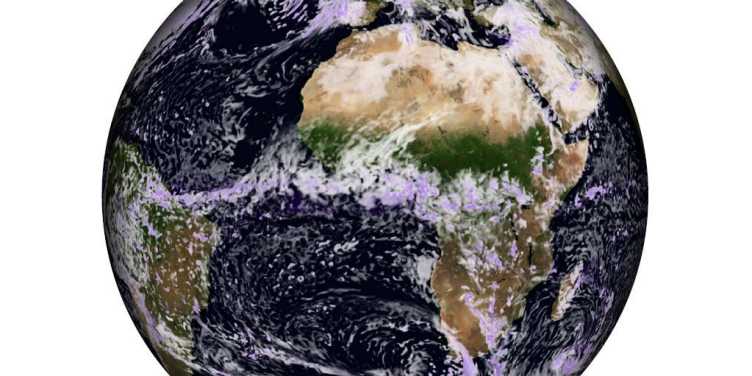
ETH-Klimarunde 2024
Save the date!
Tuesday, 29 October 2024
PhD Defenses

We congratulate our community members for their successfully completed PhDs!
- Katharina Heitmann: Characteristics and impacts of warm conveyor belts in present-day and future climate. ETH Zürich, 11 Sep 2023
- Yunke Peng: Using data-driven models to predict carbon and nitrogen cycle interactions in terrestrial ecosystems, 23 June 2023
- Ankit Shekhar: Forest vulnerability to extreme dryness stress, 16 June 2023

- external pageSchweizer Bauernverband blickt pessimistisch in die Zukunftcall_made
Prof. Robert Finger, Radio SRF 1, Echo der Zeit, 03.01.2024 - external pageEarth was due for another year of record warmth, but this warm?call_made
Prof. Reto Knutti, Straits Times, 31.12.2023 - external pageCO2-Speicherung – was macht die Schweiz?call_made
Prof. Stefan Wiemer, Radio SRF 2 KULTUR, 09.12.2023 external pageWie kann man CO2 dauerhaft im Meeresboden speichern?call_made
Dr. Cyril Brunner, Radio SRF 4 NEWS, 27.11.2023


Describing the climate evolution and estimating the current climate mean (CCM) at the local scale is an important task for climate monitoring. For several climate variables, accelerating climate change disqualifies the use of traditional climatological normals and long-term linear trends. In this recently published study, we evaluate nine established approaches that use past climate data to estimate the CCM using several transparent criteria. Some methods provide unbiased CCM estimates for a wide range of climate evolutions and independent of trend magnitudes. To enable broad usability, additional criteria are considered such as a wide applicability to a large number of climate variables and simplicity of use, settings and communication. Local linear regression emerges as a particularly promising method for describing nonlinear climate trends and determining the CCM. We also present ideas for modern climate services to complement the climate monitoring toolbox. We encourage the community to develop recommendations at the international level to increase the coherence, objectivity and robustness of climate monitoring products. MeteoSwiss will now start to implement the local linear regression method in its operational monitoring products. The method might also be employed in the upcoming edition of Swiss climate scenarios Klima CH2025.
Scherrer, S.C., de Valk, C., Begert, M., Gubler, S., Kotlarski, S., Croci-Maspoli, M. (2024) Estimating trends and the current climate mean in a changing climate. Climate Services, 33, 100428, external pagehttps://doi.org/10.1016/j.cliser.2023.100428call_made
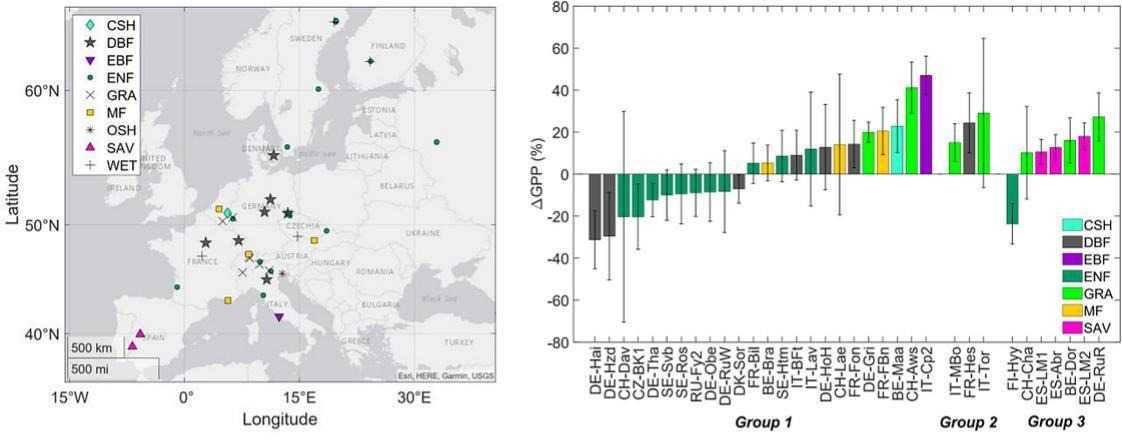
Carbon dioxide (CO2) uptake by plant photosynthesis, referred to as gross primary production (GPP) at the ecosystem level, is sensitive to environmental factors, including external pagepollutant exposurecall_made, pollutant uptake, and changes in the scattering of solar shortwave irradiance (SWin) − the energy source for photosynthesis. The 2020 spring lockdown due to COVID-19 resulted in improved air quality and atmospheric transparency, providing a unique opportunity to assess the impact of external pageair pollutantscall_made on external pageterrestrial ecosystemcall_made functioning. However, detecting these effects can be challenging as GPP is influenced by other meteorological drivers and management practices. Based on data collected from 44 European ecosystem-scale CO2 flux monitoring stations, we observed significant changes in spring GPP at 34 sites during 2020 compared to 2015–2019. Among these, 14 sites showed an increase in GPP associated with higher SWin, 10 sites had lower GPP linked to atmospheric and soil dryness, and seven sites were subjected to management practices. The remaining three sites exhibited varying dynamics, with one experiencing colder and rainier weather resulting in lower GPP, and two showing higher GPP associated with earlier spring melts. Analysis using the regional atmospheric chemical transport model (LOTOS-EUROS) indicated that the ozone (O3) concentration remained relatively unchanged at the research sites, making it unlikely that O3 exposure was the dominant factor driving the primary production anomaly. In contrast, SWin increased by 9.4 % at 36 sites, suggesting enhanced GPP possibly due to reduced aerosol optical depth and cloudiness. Our findings indicate that air pollution and cloudiness may weaken the terrestrial external pagecarbon sinkcall_made by up to 16 %. Accurate and continuous ground-based observations are crucial for detecting and attributing subtle changes in terrestrial ecosystem functioning in response to environmental and anthropogenic drivers.
Tang ACI, Buchmann N et al. (2023) Detection and attribution of an anomaly in terrestrial photosynthesis in Europe during the COVID-19 lockdown, Science of The Total Environment, Volume 903,2023,
166149, ISSN 0048-9697, external pagehttps://doi.org/10.1016/j.scitotenv.2023.166149call_made.
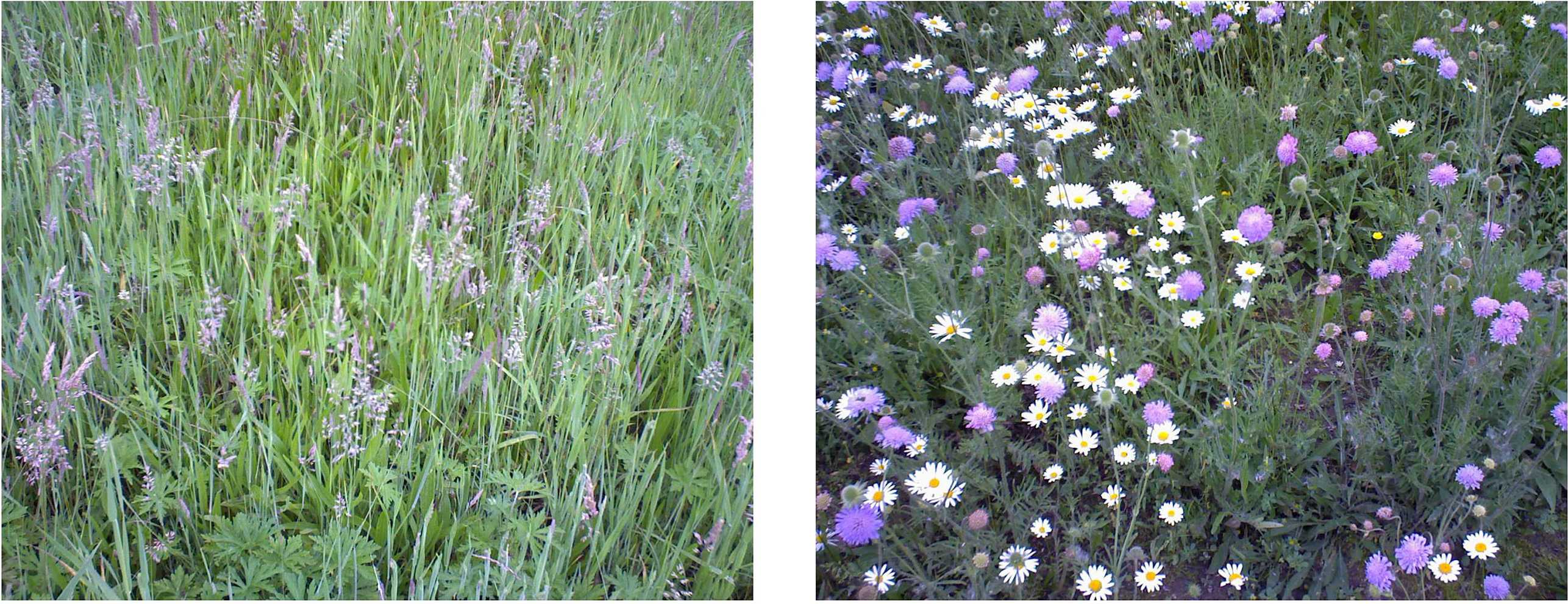
Understanding the impacts of climate change on plant external pagephenologycall_made is crucial for predicting ecosystem responses. However, accurately tracking the flowering phenology of individual external pageplant speciescall_made in grassland species mixtures is challenging, hindering our ability to study the impacts of biotic and external pageabiotic factorscall_made on plant reproduction and plant-pollinator interactions. Here, we present a workflow for extracting flowering phenology from grassland species mixtures using near-surface time-lapse cameras. We used 89 image series acquired in plots with known species composition at the Jena trait-based experiment (Germany) to develop random forest classifiers, which were used to classify images and compute time series of flower cover for each species. The high temporal resolution of time-lapse cameras allowed to select images in proper light conditions, and to extract external pagevegetation indicescall_made and texture metrics to improve discrimination among flowering species. The random forest classifiers showed a high accuracy in predicting the cover of Leucanthemum vulgare, Ranunculus acris, and Knautia arvensis flowers, whereas graminoid flowers were harder to predict due to their green-to-brownish colours. The proposed workflow can be applied in climate change studies, ecosystem functioning, plant external pagecommunity ecologycall_made, and biodiversity change research, including the investigation of effects of species richness on individual species' flowering phenology. Our method could be a valuable tool for understanding the impacts of climate change on plant reproduction and ecosystem dynamics.
Andrea D, Bachofen C, Dalponte M, Klaus V H, Buchmann N (2023): Extracting flowering phenology from grassland species mixtures using time-lapse cameras, Remote Sensing of Environment,Volume 298, 2023, 113835, ISSN 0034-4257,external pagehttps://doi.org/10.1016/j.rse.2023.113835call_made.

